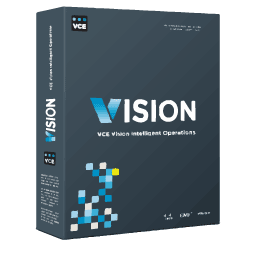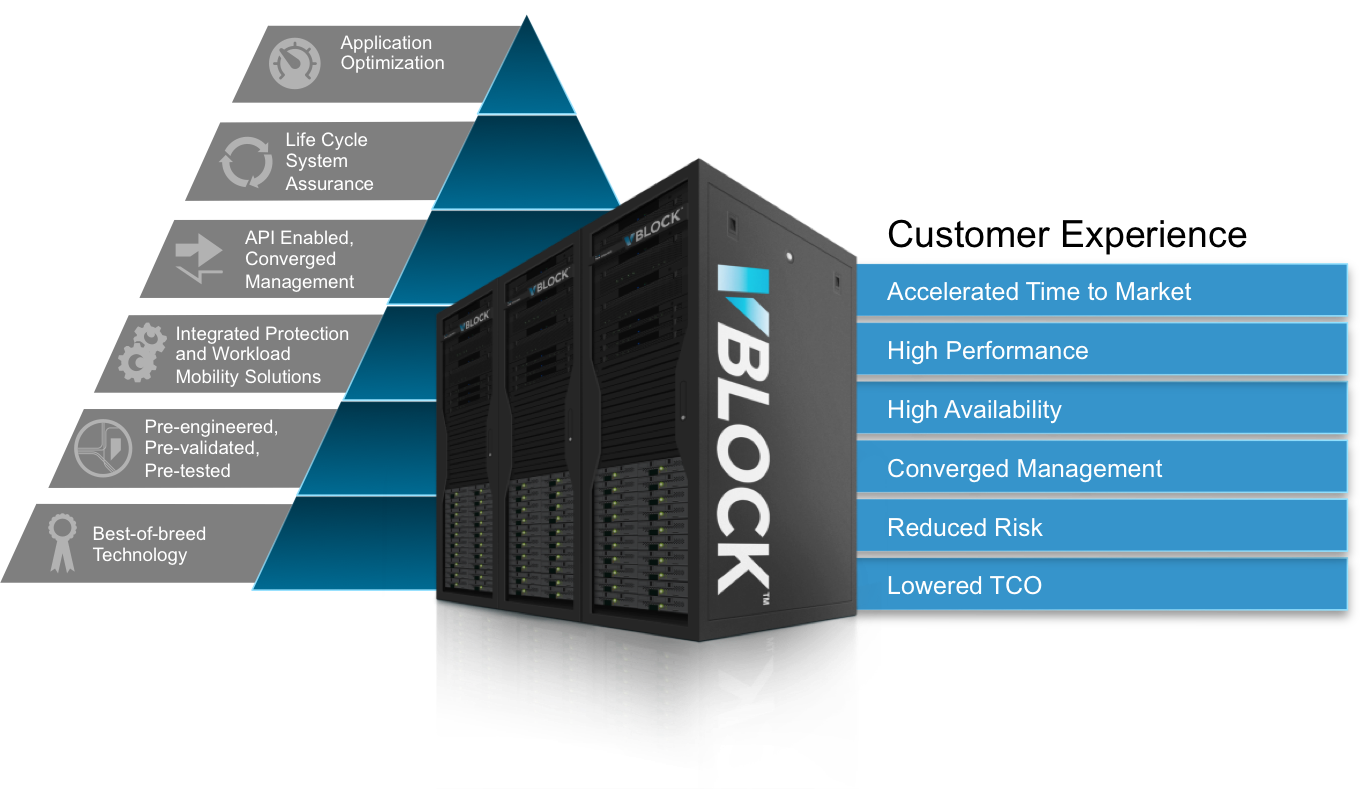Since VCE was founded in 2009, Vblock Systems have become well known throughout the industry for best-of-breed hardware, rapid deployment, and single vendor support. However, we must continue to focus on our customers’ experience when integrating new technologies from our investor companies, not only to accelerate time-to-market, but also to reduce risk and lower the total cost of operation.
 Case in point: In September, VCE introduced two new storage platforms to the Vblock System family: the next-generation VNX platform and the XtremIO all-flash array. Both platforms have understandably generated a great deal of excitement.
Case in point: In September, VCE introduced two new storage platforms to the Vblock System family: the next-generation VNX platform and the XtremIO all-flash array. Both platforms have understandably generated a great deal of excitement.
With an increased number of faster cores utilizing MCx multi-core optimization, the new VNX platform offers quicker file response and lower latency times. Block de-deuplication and a lower cost per gigabyte are providing greater efficiencies and increased application availability.
Designed to meet the requirements of the most demanding applications, the EMC XtremIO all flash-based arrays ensure exceptional performance and responsiveness for massively scalable solutions. This makes it ideal for solutions such as virtual desktop infrastructure, enabling higher performance per virtual desktop at a lower price.
All this of course leads to the question – “When do new technologies become available within Vblock Systems?”
In this case, it’s not as simple as plugging in the new storage; customers expect VCE to perform the due diligence so they don’t have to. They expect a pre-validated solution that will perform and scale predictably, ensuring critical business applications are available and service-level agreements (SLAs) are met.
For several months prior to the announcement, VCE and EMC engineers worked hand-in-hand to test and pre-validate the next-generation VNX storage array within the Vblock System 340 and the XtremIO array within the Vblock Specialized System for Extreme Applications. So what does this really mean?
The integration of compute, network, storage, and virtualization components is critical – those who work in data centers know all too well that hardware integration can be time-consuming and complex. When deploying a new infrastructure into production, engineers must ask:
- What’s the best configuration for a given application?
- How do we properly segregate workloads or use cases?
- How do we protect against critical data loss or a localized disaster?
- How are we going to maintain the environment?
VCE considers these questions when testing and pre-validating Vblock Systems for not only the application type or workload, but with disaster recovery and data mobility in mind too. Depending upon requirements, VCE engineers are able to factory-integrate products, such as Avamar, Data Domain, and VPLEX, into Vblock Systems so they’re production-ready on day one.
I meet with a good number of customers on my travels, often discussing their pain points and what would be most critical to them in a potential solution. One pain point that often comes up, and it isn’t a glamorous one, is upgrades. This is an area I can certainly relate to – I’ve lived the dream in a former life! In fact, I once worked as a storage engineer for a company that kept all code releases – storage, network, compute, HBAs, and more – on a whiteboard. This might sound eerily familiar to some. With some digging and searching for the correct code revisions, upgrades would work well until we upgraded a SAN switch, unaware somebody hadn’t upgraded an HBA. At this point, the servers couldn’t see their storage and the application (in this case an Oracle database) came crashing down. Missed SLAs and a frantic dash to the data center is what happened next.
 You know what’s coming – we’ve taken care of that too – even for a Vblock System with newly introduced hardware. We test and validate our systems prior to making them available, and will continue to do so with future releases to accelerate time to market and reduce risk in customer data centers.
You know what’s coming – we’ve taken care of that too – even for a Vblock System with newly introduced hardware. We test and validate our systems prior to making them available, and will continue to do so with future releases to accelerate time to market and reduce risk in customer data centers.
We’ve actually taken it a step further through the use of VCE Vision Intelligent Operations. VCE Vision Intelligent Operations can discover and validate the code levels throughout Vblock Systems – it’s like someone verifying all the information on the whiteboard before you start the upgrade – giving customers this baseline so no one has to make that dash from the office to the data center. It’s true push-button automation.
Looking back to the graphic above you can see, at least at a high level, all we do for each and every Vblock System landing on a data center floor. Whether or not we’re introducing a new technology, we’ve done the testing so customers don’t have to.
